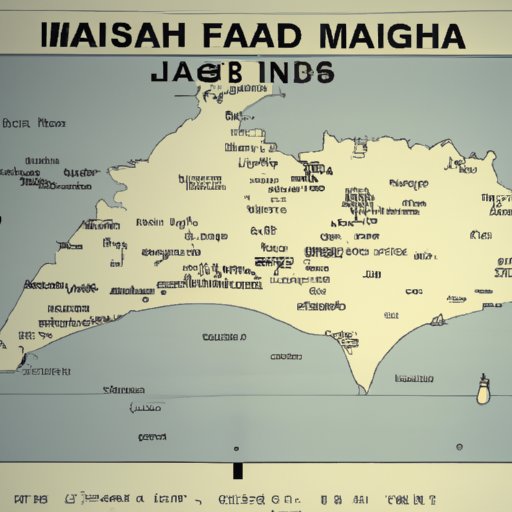Introduction
The Pacific theater of World War II was a vast area of operations that stretched from the Pacific Ocean to East Asia and the Southeast Asian countries. It was the largest theater of the war, encompassing more than 100 million square miles and involving millions of personnel from many nations. The Pacific theater was characterized by intense fighting between the United States and Japan, whose forces engaged in a series of naval and air battles across the Pacific Ocean, as well as ground engagements in the islands of the South Pacific.

Historical Overview of the Pacific Theater in World War II
The Pacific theater of World War II began with the Japanese attack on Pearl Harbor on December 7, 1941, and ended with the surrender of Japan on August 15, 1945. During this period, the United States and its allies fought a series of major battles and campaigns against the Japanese in the Pacific, including the Battle of Midway, the Guadalcanal Campaign, the Battle of Leyte Gulf, and the Okinawa Campaign. These engagements were some of the most important of the war, and they had a decisive impact on the outcome of the conflict.
Major Battles and Campaigns of the Pacific Theater
The Battle of Midway, which took place in June 1942, was one of the most significant engagements of the entire war. In this battle, the U.S. Navy decisively defeated the Japanese fleet, sinking four enemy aircraft carriers and crippling the Japanese navy’s ability to carry out further offensive operations. This victory helped turn the tide of the war in favor of the Allies.
The Guadalcanal Campaign was another major engagement of the Pacific theater, lasting from August 1942 to February 1943. In this campaign, the U.S. Marines and other Allied forces fought a grueling battle against the Japanese for control of the Solomon Islands. After nearly six months of fierce fighting, the Allies emerged victorious and secured a strategic foothold in the South Pacific.
The Battle of Leyte Gulf, which occurred in October 1944, was the largest naval battle in history. In this engagement, the U.S. Navy inflicted a crushing defeat on the Japanese fleet, dealing a devastating blow to the Japanese navy and effectively ending their ability to carry out further offensive operations. This victory paved the way for the Allies’ eventual victory in the Pacific.
The Okinawa Campaign was the final major battle of the Pacific theater. This campaign lasted from April to June 1945, and it was one of the bloodiest battles of the entire war. In the end, the U.S. forces were victorious, securing control of the island and paving the way for the invasion of the Japanese mainland.
Key Players and Nations in the Pacific Theater
The primary combatants in the Pacific theater were the United States and Japan. However, other nations played a role in the conflict as well, including Australia, China, and the Soviet Union. The U.S. and its allies were aided by Chinese forces, who provided intelligence and logistical support, while the Soviets provided assistance to the Chinese in the form of weapons and supplies.
Role of Technology and Tactics in the Pacific Theater
The use of technology and tactics played an important role in the Pacific theater. Aircraft carriers, which had been developed during the interwar period, allowed the U.S. Navy to project power far beyond its shores. Strategic bombing, which was pioneered by the U.S. during the war, allowed for the destruction of enemy targets without the need for ground troops. Naval blockades, such as the one imposed on Japan after the Battle of Midway, prevented the Japanese from resupplying their forces in the field. Finally, the U.S. employed a tactic known as “island hopping,” which allowed them to bypass heavily defended Japanese positions and rapidly advance across the Pacific.
Legacy of the Pacific Theater in Modern Times
The legacy of the Pacific theater in World War II is still felt today in many different ways. It had a profound impact on international relations, as it led to the emergence of the United States as a superpower and the rise of Japan as a major economic power. It also had a lasting influence on military strategy and tactics, with the development of aircraft carriers, strategic bombing, and island hopping becoming integral parts of modern warfare. Finally, the Pacific theater had long-term economic effects, as the U.S. and Japan became major trading partners after the war.
Conclusion
The Pacific theater of World War II was a vast area of operations that involved millions of personnel and saw some of the most intense fighting of the entire war. It was characterized by the U.S. and its allies engaging in a series of major battles and campaigns against the Japanese, as well as the use of innovative technology and tactics. The legacy of the Pacific theater can still be seen today in international relations, military strategy, and the economy. The events of the Pacific theater remain some of the most important in world history and have shaped the modern world in countless ways.
(Note: Is this article not meeting your expectations? Do you have knowledge or insights to share? Unlock new opportunities and expand your reach by joining our authors team. Click Registration to join us and share your expertise with our readers.)
